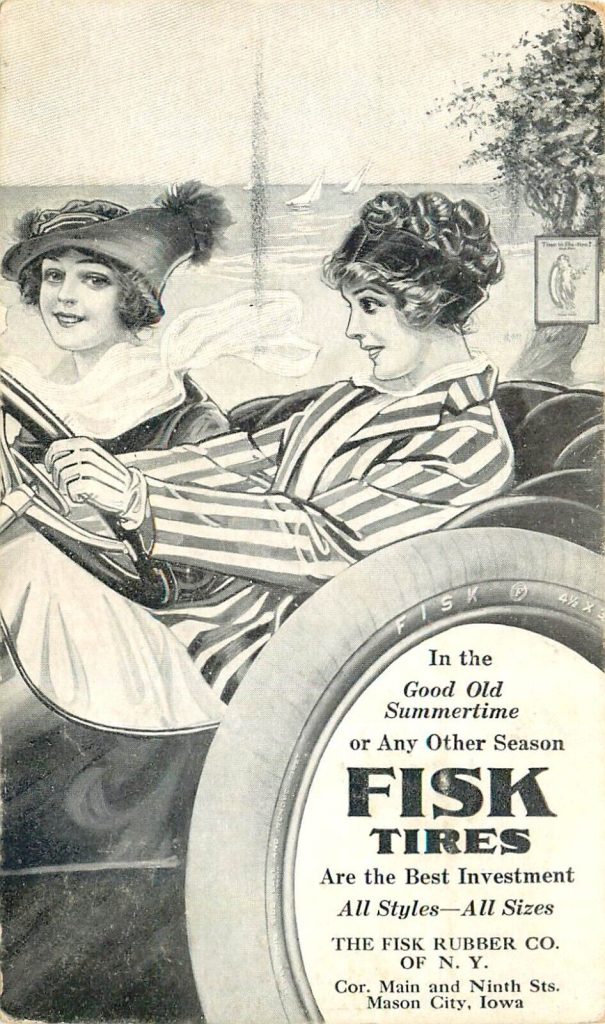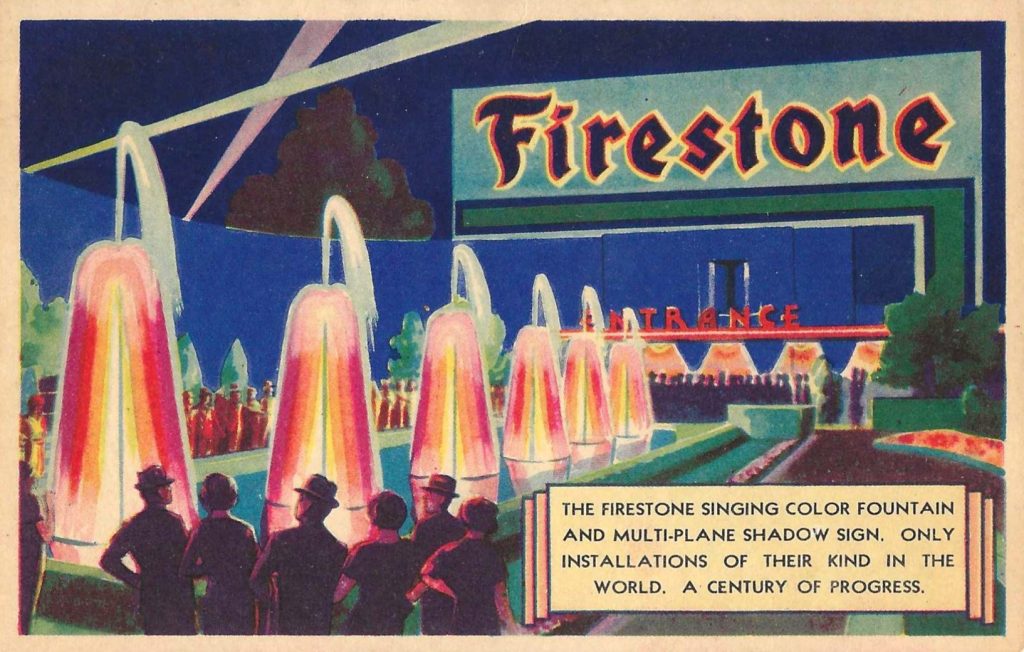George “Burt” Martin
Postcards Advertising Tires
We seldom think about the tires on our car until one goes flat. Sure, there is that “Tire Pressure” reminder light that comes on every fall that annoys everyone, but it’s a minor and easily solved problem. (A neighbor of mine refers to that inconvenience as “going to get the winter-air they put in her tires.) Otherwise, most of us are always “shocked” at the price of a new tire or repair of one, if that is possible. Have you noticed that tires that cost $350 or more are never repairable.
Compared to the number of miles traveled in America today, the number of flat tires is minuscule. That has not always been so. I don’t know how the numbers are collected, but they are probably extrapolated from various industry or government websites related to automobiles and transportation. It is supposed that eleven billion miles are driven each day in America and the average daily flat tire count is probably between 90 and 110 thousand.
Flat tires have almost slipped out of the American mind-set. I recently gave the “flat tire” a great deal of thought – that in itself is an accomplishment for a guy my age – and I calculated that I had driven approximately 49,350 miles without experiencing a flat tire. I guess what brought all this to mind was the fact that I had two flat tires within a month.
As many experiences do, my second flat tire made me remember that some place in my postcard collection is a card from Louis to his wife Elizabeth. Louis made a trip from his home in Stone Harbor, New Jersey, to Mauch Chunk, Pennsylvania, a distance of 165 miles. (The village of Mauch Chunk became Jim Thorp, Pennsylvania in 1954.) The message on the card read, “Arrived here safe at 4 today, only one puncture.” Puncture was a commonly used word for a flat tire early in the 20th century.

If Louis wanted his wife to know about his puncture, it must have been that it was a fairly common thing that interrupted many driver’s travel to repair a flat.
Most drivers today – if they told the truth – would tell you they have never changed a flat tire and if they needed to, they would not know how.
***
The first pneumatic (inflatable) tire was developed in 1888 by John Dunlop. It may be difficult to separate the manufacture of solid or pneumatic tires into a timeline because the Michelin Group claims first rights in France in 1888, yet Pirelli makes a similar claim in Italy in 1872 – sixteen years earlier. The only sure thing is that out of the ten earliest tire manufacturers at the turn of the 20th century, only Goodyear (began production in 1898) and Cooper (1914) were American firms.
In the tire industry, a flat tire is called an operational failure. The way that a tire fails is attributed to too much or too little of two things: heat and water. Heat makes rubber melt and water creates conditions such as hydroplaning. On the too little side of the equation, the lack of water in sandy areas exaggerates or diminishes the degree of cohesiveness of sand or other road surfaces.
The operational failure is one we all dread and the consequence is that we never know when we will be the victim of a flat-tire-god. Thankfully the odds today are a great deal different than in the years when the postcards below advertised a product, we all needed but seldom liked paying for.
The Fisk Rubber Company, New York, New York, was a business that used advertisement postcards frequently. In market terms, Fisk was a replacement tire concern. They cleverly used the word “retire” in their ads and success followed. Fisk even hired America’s favorite folk artist Norman Rockwell to prepare a set of cards that included the text, “Time to Re-Tire.”

The Fisk Rubber Company came to be when the Spaulding and Pepper Company was sold to Noyes W. Fisk. They were a recognized force in the tire industry for more than two decades. Their plant in Chicopee, Massachusetts, turned out more than 50,000 tires per day. The Fisk inventory was merchandized in locations found in more than 40 states.
The first set of postcard images came from newspaper display ads that were commissioned in 1916. The message proposed that Fisk tires were so good, that any father could allow his daughter to drive to her destination without concern of a flat tire.
Other re-tires appeared as sleepy-eyed children, beautiful young women,



Firestone advertised using R. R. Donnelly’s Deeptone, linen cards at the 1933 Century of Progress exposition in Chicago.
Federal Tire Company came late to the world of tire advertising on postcards: 1954. The company was founded in Taiwan and for more than 40 years worked in cooperation with Bridgestone and Sumitomo making brand name tires for worldwide distribution. Federal now manufactures specialty items for vehicles that need industrial performance quality. The card below may be one of only a few Federal ad cards done by the A. C. company of San Francisco, circa late 1950s.

Copyright © 2023 Postcard History LLC







Fine bit of tire history. I absolutely love the Fisk postcard samples.
These are outstanding postcards, and what a joy to see and read about that industry. We do not think about flat tires anymore. I was told by an older friend maybe 40 years ago that I needed to be a member of AAA. I took his excellent advice and I leave most of the car issues, if they happen, to AAA. With cell phones, it is easier than before to call for assistance.